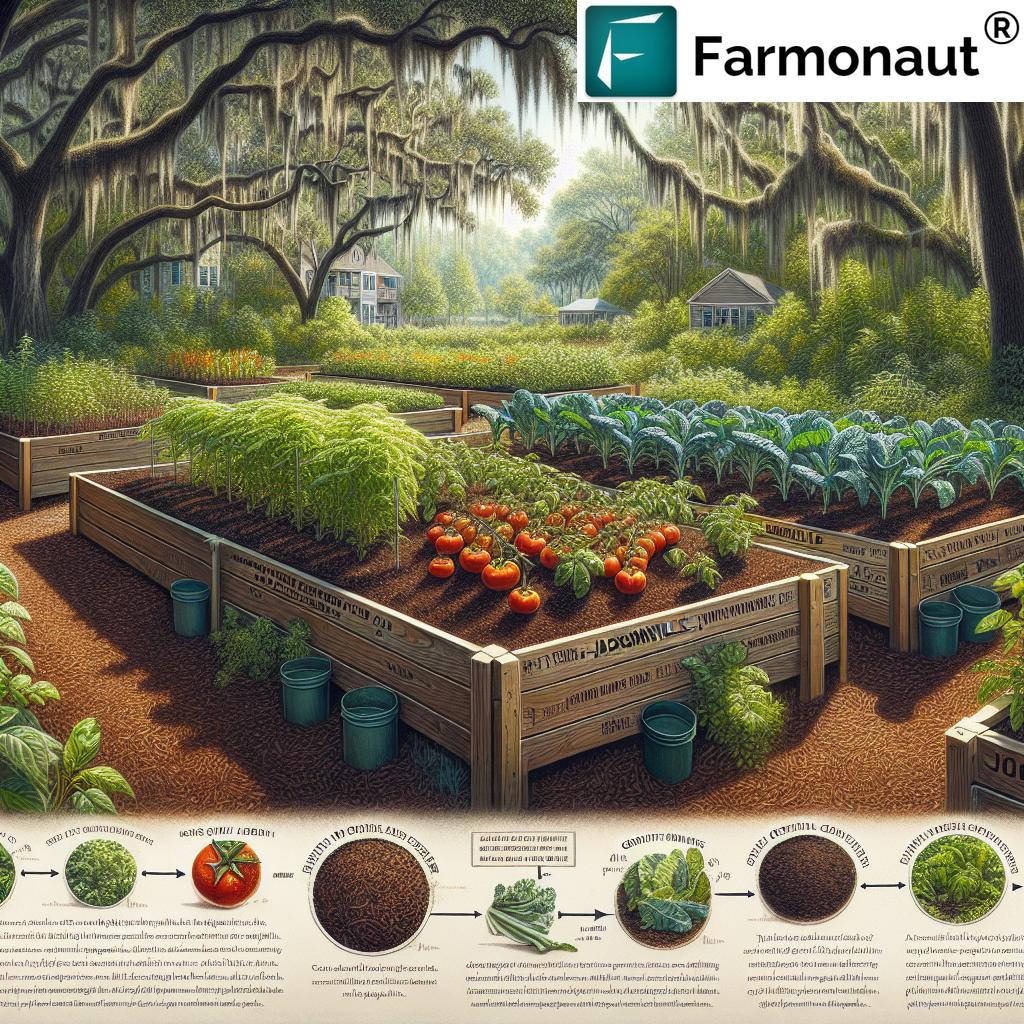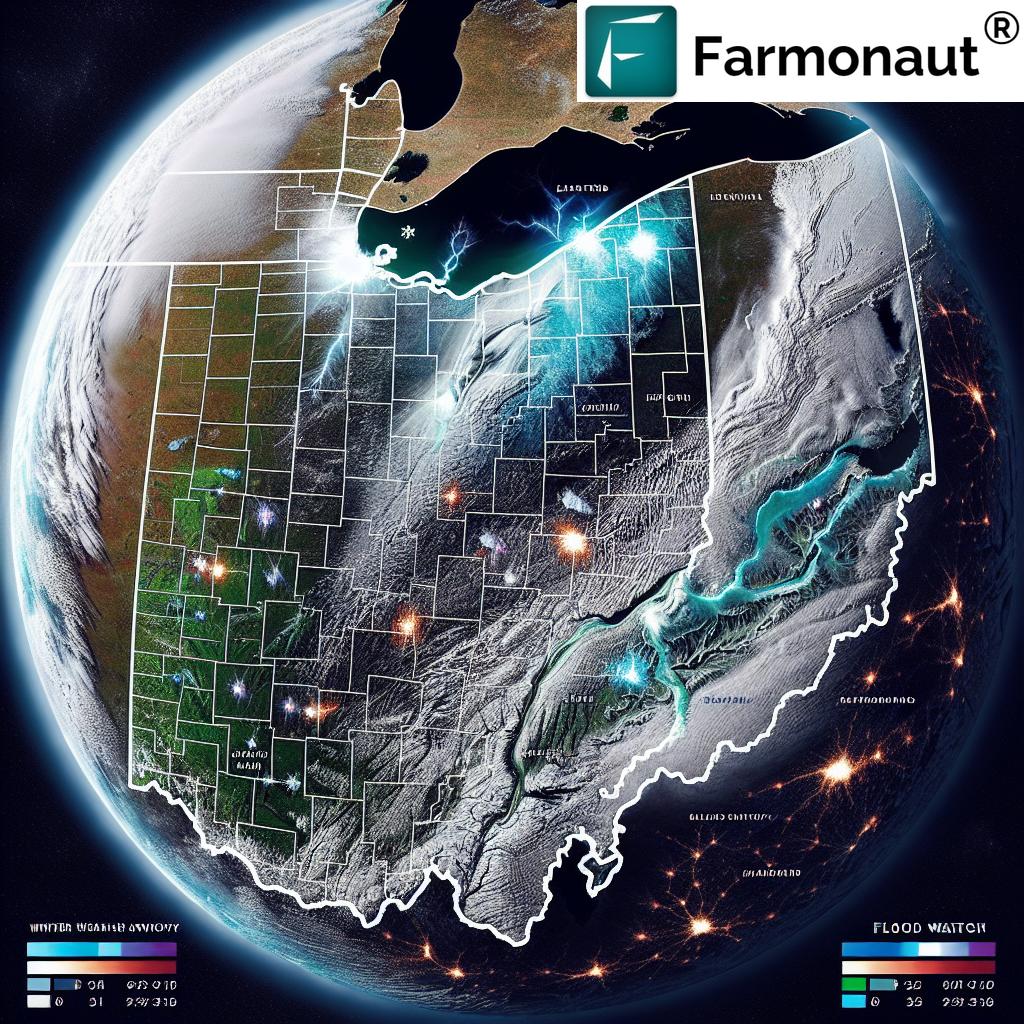Affordable Farm and Ranch Insurance in Western NC 2025: Coverage, Risks, and Sustainable Strategies
“Over 70% of Western NC farms face severe weather risks—affordable insurance can reduce potential financial loss by 60% in 2025.”
Summary: Affordable Farm and Ranch Insurance in Western North Carolina: Essential Coverage for 2025
Western North Carolina’s deeply rooted traditions in farming and ranching are the backbone of both its economy and culture. As weather, climate, regulatory, and operational risks evolve, securing affordable farm and ranch insurance in western nc is now indispensable. This blog post explores why protection through comprehensive insurance is essential for resilient, sustainable agricultural management in 2025.
The Importance of Affordable Farm and Ranch Insurance in Western NC
Farming and ranching in Western North Carolina represent more than economic activity—they are cultural heritage, supporting environmental stewardship and local economies. However, this region’s rugged terrain, unpredictable weather, and dynamic markets present significant challenges for agricultural sustainability.
- Financial Security: Farm and ranch insurance in NC is crafted to overcome the limits of generic homeowners’ policies by addressing agriculture-specific assets, liabilities, and operational risks.
- Protecting Heritage: Strong coverage shields families’ generational investments against disasters and accidents—ensuring that Western North Carolina’s legacy continues to thrive.
- Sustainable Management: Insurance enables sustainable decision-making by allowing farm and ranch managers to plan for the future with confidence, regardless of market or weather volatility.
The importance of affordable farm and ranch insurance in western nc cannot be overstated. Customized policies ensure not only financial viability but also the ongoing contribution of agriculture to the North Carolina region’s culture and economy in 2025 and beyond.
Top Regional Risks Impacting Affordable Coverage in Western NC
Western NC exhibits unique regional challenges that influence insurance availability, affordability, and coverage. Understanding these is essential to designing responsive insurance solutions.
- Diverse Terrain: This region includes mountainous areas, rolling hills, fertile valleys, and vast forestlands—each bringing distinct farming hazards.
- Climate Risks: Unpredictable weather patterns (floods, droughts, and high winds), as well as shifting climate conditions, increase risks for crops, pasture, timber, and infrastructure.
- Pests and Diseases: Pest invasions and livestock diseases (like avian flu and bovine illness) threaten farm operations and require specialized insurance coverage.
- Market Fluctuations: Livestock, dairy, and timber prices can swing rapidly, jeopardizing income stability and complicating insurance claims or business continuity.
- Rugged Access and Infrastructure: Road access, equipment transport, and property repairs are all more challenging in remote, rugged landscapes.
- Regulatory & Conservation: North Carolina regulatory environments affect land use, water management, and liability, especially regarding endangered species and environmental impact.
Affordable farm and ranch insurance in western nc must be as diverse and comprehensive as the risks faced by farmers and ranchers in this unique region.
Comparison Table: Farm and Ranch Insurance Options in Western NC (2025)
Selecting the best farm and ranch insurance starts with clear comparison. Below is a concise table outlining key options in Western NC for 2025—empowering you to make informed, cost-savvy choices.
| Insurance Provider | Coverage Features | Est. Annual Premium ($) | Deductible ($) | Regional Risk Coverage | Notable Exclusions | Sustainability Support Programs |
|---|---|---|---|---|---|---|
| NC Farm Bureau | Property, liability, livestock, machinery, crop | 2,500–4,900 | 500–2,500 | Yes | Flood, intentional loss | Environmental grants |
| Nationwide Agribusiness | Property, farm liability, equipment, business interruption | 2,800–6,200 | 1,000–5,000 | Yes | Pollution events | Farm conservation incentives |
| AgriRisk Solutions | Livestock, equipment, outbuilding, crop hail | 1,900–3,800 | 750–2,000 | Yes | Exotic species, improper storage | Risk mitigation workshops |
| American Agricultural Insurance Co. | Full farm package, timber, public liability | 2,400–5,500 | 1,250–4,500 | Yes | Crop disease, intentional acts | Reforestation & habitat programs |
Estimates for 2025 policies. Check each provider’s documentation for the most up-to-date information. Source: Public insurance rates and regional agent disclosures.
Types of Farm and Ranch Insurance Coverage in Western NC
Each farm and ranch in western North Carolina faces its own unique risks. Understanding available policy coverage is essential to creating a comprehensive insurance package.
-
Property Insurance:
- Covers farm buildings (barns, silos, storage sheds), homes, machinery, equipment, and inventory (feed, seed).
- Protection from fire, theft, vandalism, wind, and more.
-
Liability Insurance:
- Covers bodily injury or property damage to others (visitors, workers, or the public).
- Essential for agritourism operations or direct sales to customers.
-
Livestock Insurance:
- Protection for cattle, goats, poultry, and specialty stock against death, injury, or disease.
- Special endorsements may cover theft or transportation accidents.
-
Crop Insurance:
- Mitigates risk from loss or reduced yields due to drought, flood, hail, and certain pests (often subsidized by USDA or state programs).
-
Equipment Insurance:
- Repair or replacement for tractors, plows, sprayers, and harvesting equipment due to breakdown, accident, or theft.
-
Timber Insurance:
- Coverage for timberland against fire, pest infestations, or storm damage that is crucial for forestland owners in western NC.
-
Business Interruption Insurance:
- Provides support if operations must halt due to covered disasters (important for family-run and diversified farms).
Understanding Insurance Costs and Premium Trends in 2025
Affordable farm and ranch insurance in western nc is influenced by more than policy features—premium rates, deductibles, and discounts all play a part. Knowing these factors helps maximize your budget.
- Policy Structure: Bundled comprehensive packages covering property, liability, equipment, and livestock are typically more cost-efficient than piecemeal options in western NC.
- Farm Size and Scale: Small homesteads may pay less than large, engaged, mixed-crop operations due to risk exposure and asset values.
- Regional Risk Factors: Higher risk from mountainous areas, rolling hills, and rugged terrain can increase premiums or lower coverage availability.
- Claims History: Farms with frequent past claims may face higher rates or require loss mitigation before renewal.
- Preventive Practices: Insurers offer discounts for proactive measures—good maintenance, robust fencing, fire breaks, and risk documentation.
- Government Subsidies: USDA and state-supported crop insurance programs reduce costs for enrolled farmers (see below for more).
Staying up to date with insurance trends and reviewing your policy annually is essential for affordability in the ever-evolving agricultural landscape of Western North Carolina.



Farmonaut Satellite API: Integrate near real-time farm insights for insurance, resource management, and crop monitoring.
Developer Docs – Remote Sensing and Weather Data Integration for Modern Agriculture & Insurance Solutions.
“Only 44% of ranches in Western NC are fully insured—strategic coverage could double protection by 2025.”
Practical Tips and Strategies for Securing Affordable Farm and Ranch Insurance in Western NC
To guarantee affordable, comprehensive coverage in 2025, follow these actionable strategies specifically tailored for Western North Carolina farms and ranches:
-
Understand Your Unique Risks:
- Assess exposures based on terrain (mountainous, rolling, lowlands), crop type, livestock, and farm infrastructure.
- Document previous events (flood, invasion, breakdowns, lawsuits), and use historical insurance claims to anticipate needed coverage.
-
Work with Local, Regional Insurers:
- Choose insurance agents and providers deeply familiar with the Western NC region. Local agents are better equipped to tailor policies for local weather patterns, pest risks, or regulatory nuances.
- Inquire about multi-policy packages for additional discounts.
-
Bundle and Compare:
- Combine property, equipment, liability, crop, and livestock coverage into one package for best rates.
- Request policy comparisons from at least three providers; refer to the comparison table above for a head start.
-
Demonstrate Good Management:
- Implement risk management—maintain fences, perform regular equipment checks, adopt biosecurity for livestock and poultry, improve drainage and erosion control.
- Record and document management measures to share with insurers for better premium rates.
-
Utilize Government and Nonprofit Programs:
- USDA crop insurance supports small and large farms facing drought or natural disasters.
- North Carolina agricultural agencies often run cost-sharing programs for conservation measures, which can reduce insurance premiums.
- Refer to Farmonaut’s Crop Loan and Insurance Solutions for making insurance documentation, risk assessment, and resource optimization easier for eligible operations.
-
Stay Up to Date on Industry Changes:
- Monitor insurance updates yearly, adapt coverage to new equipment, expanded land, or new farming enterprises.
- Join local farm organizations and insurance forums to discuss emerging risks (invasive species, new livestock diseases, regulatory shifts).
Government Programs and Financial Assistance for Farm and Ranch Insurance in Western NC
Affordable insurance for farmers and ranchers is increasingly achievable through supportive public programs and financial products in 2025:
-
USDA Federal Crop Insurance Program (FCIP):
- Essential for shielding crops against weather, disease, and pest risks.
- Subsidized premiums can cut annual costs by up to 60% for qualifying crops.
-
Disaster Assistance:
- USDA and state-level programs reimburse a portion of losses due to unpredictable weather patterns, wildfires, or disease outbreaks.
-
North Carolina State Resources:
- Insurance education, advisory, and cost-share programs for conservation, fencing, or erosion control (which simultaneously reduce insurance exposures).
-
Farm Credit Service and Agri-Financing:
- Specialized lending often ties insurance opt-in to lower loan rates or easier qualification for operational credit.
- For satellite-supported loan/insurance products, see Farmonaut Crop Loan and Insurance for satellite-verified insurance documentation and faster access to government-linked programs.
-
Conservation and Environmental Incentives:
- Many insurance providers offer premium discounts for farms enrolled in sustainability programs, carbon credit systems, or traceability services such as those provided here: Farmonaut Carbon Footprinting and Traceability Solutions.
Modern Technology for Risk Management & Sustainable, Insurable Agriculture
The rise of remote sensing, AI, and digital platforms is transforming how farmers in western NC manage risk, enhance sustainability, and qualify for the best insurance packages in 2025.
-
Satellite-Based Monitoring:
- Track crop health, soil conditions, and livestock locations using remote imagery. This immediate awareness is critical for anticipating and documenting insurance-relevant events (pest invasions, weather damage).
- Technology overview: Farmonaut Large-Scale Management Platform provides advanced satellite analytics for managers overseeing large or multi-location operations in Western NC.
-
AI-Driven Advisory Systems:
- Leverage AI for early warnings about threats, maintenance scheduling, and agronomic decisions. For example, the Jeevn AI Advisory System on Farmonaut analyzes multi-layered data to deliver custom-prepared, actionable strategies for farming, ranching, and environmental compliance.
-
Traceability and Environmental Compliance:
- Blockchain-based records facilitate rapid claims processing and ensure the provenance of specialty products, reducing disputes and risk for insurance purposes. Learn more: Farmonaut Traceability Solutions.
- Automatic carbon footprint tracking with platforms such as Farmonaut Carbon Footprinting may qualify farms/ranches for lower premiums and new insurance-linked incentives.
-
Fleet and Resource Management:
- Digital platforms for fleet management and equipment monitoring (see Farmonaut Fleet Management) help control operational risks, minimize breakdowns, and lower liability exposures.
-
Document Everything:
- Maintain records using digital farm logbooks or cloud-based systems. Insurers favor policyholders capable of quickly supplying evidence for claims or risk mitigation.
For all insurance-ready data management and digital platform needs, explore Farmonaut’s Web, Android, and iOS Apps. These tools compile multi-spectral mapping, AI advice, and automated documentation for regulatory, insurance, and resource optimization in Western NC.
How Farmonaut Supports Resilient and Insurable Agriculture in Western NC
At Farmonaut, we leverage satellite technology, AI, and blockchain to provide essential digital tools for farmers, ranchers, insurance providers, and lending institutions in Western North Carolina and beyond.
- Our satellite-based monitoring delivers regular, cost-effective field and infrastructure health data for farm and ranch management, helping users anticipate and address risks before they result in insurance claims or loss.
- The Jeevn AI Advisory System offers personalized insights and early warnings—empowering farms/ranches to implement loss-prevention strategies in real time.
- Our blockchain solutions provide traceability and documentation, streamlining the claims process and increasing transparency for insurance and loan providers.
- Through fleet and resource management modules, we enable efficient equipment utilization and reduced downtime, which can lower insurance liability premiums.
- With real-time environmental monitoring, our tools help farmers/ranchers remain compliant with regulatory sustainability requirements, improving eligibility for insurance incentives and government programs that reward proactive management.
Our mission is to empower Western NC farmers and ranchers with accessible, affordable, scalable solutions that protect both their businesses and their cultural/environmental legacy—while optimizing insurability and cost efficiency.
Frequently Asked Questions (FAQ) on Affordable Farm and Ranch Insurance in Western NC 2025
1. What is the average annual premium for farm and ranch insurance in western NC for 2025?
In 2025, average annual premiums for affordable farm and ranch insurance in western nc typically range from $1,900 to $6,200, dependent on farm size, risk profile, asset value, and level of coverage. Bundling multiple coverage types often reduces costs.
2. Which coverage is most important for North Carolina’s diverse terrain?
Comprehensive policies that address property, liability, livestock, crop damage, and business interruption are most effective—especially in areas exposed to frequent severe weather, invasive pests, or difficult geography.
3. How can I ensure that my policy covers regional risks specific to Western NC?
Work with local insurers who know the Western NC region and verify that your policy expressly covers mountainous, hilly, or flood-prone locations, and includes support for timber, livestock, and agritourism risks.
4. Are there insurance discounts for sustainable agriculture and risk management?
Yes. Many providers discount premiums if you demonstrate sustainable practices, use environmental monitoring, document traceability, or enroll in recognized conservation programs like those supported by Farmonaut Carbon Footprinting.
5. Can technology or remote monitoring help reduce my insurance rates?
Absolutely. Using digital monitoring platforms (like Farmonaut’s large scale management apps), AI advisories, and automated documentation both lowers operational risk and makes it easier to prove compliance—often resulting in lower premiums and better claims outcomes.
Conclusion: Future-Proofing Your Agricultural Heritage with Affordable Farm and Ranch Insurance
Securing affordable farm and ranch insurance in Western North Carolina for 2025 isn’t just a financial transaction—it’s a strategic investment in your operation’s longevity, family heritage, and community contribution. As climate and regulatory challenges continue to evolve, the insurance solutions you implement today are the foundation for continued sustainable management and resilience tomorrow.
- Understand your unique risks.
- Partner with local, knowledgeable insurers.
- Leverage modern technology for risk reduction and documentation.
- Routinely review and update your policy to match your operation’s scale and goals.
- Take advantage of all available government and nonprofit incentive programs.
By thoughtfully combining full-spectrum insurance with proactive management and cutting-edge digital tools, Western NC farmers and ranchers will be equipped to navigate 2025’s uncertainties—and sustain the region’s deeply rooted traditions in agriculture for generations to come.
Start your journey toward affordable, comprehensive coverage today—empower your operation with the best risk management and insurance solutions that Western North Carolina’s agricultural community has to offer.











